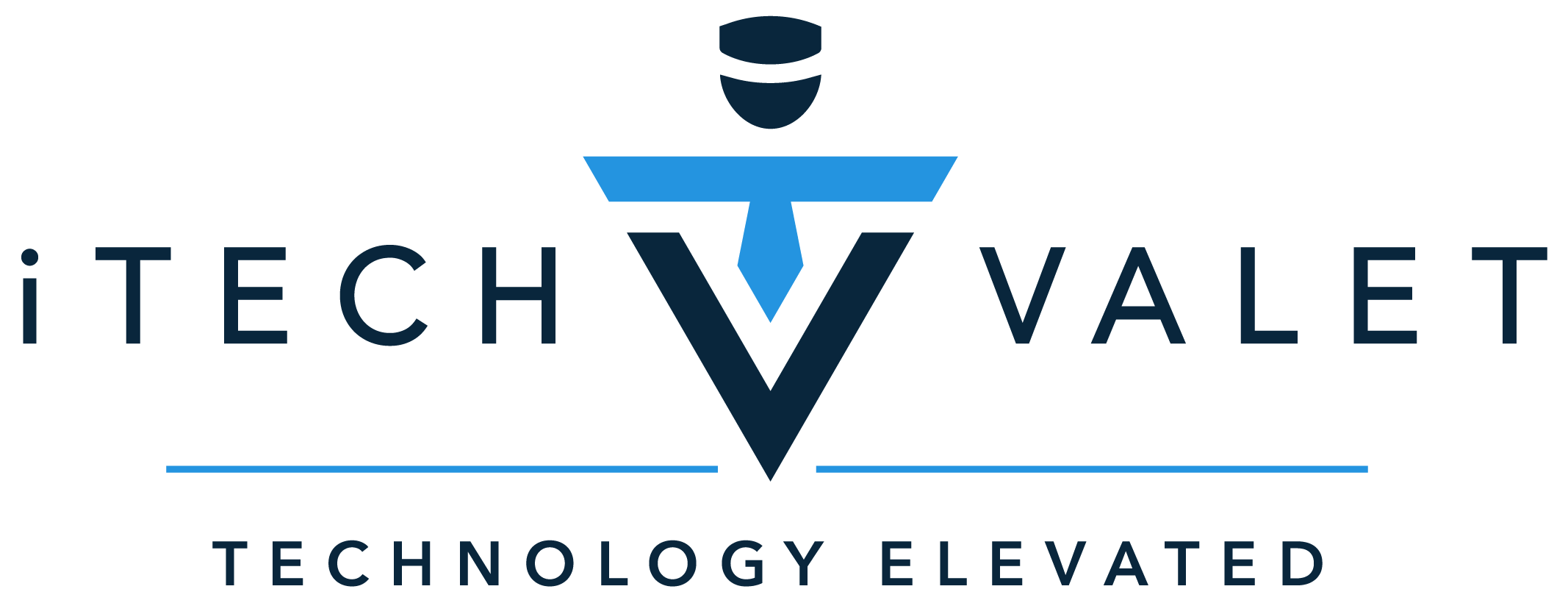
What Offers Actually Get New Chiropractic Patients to Book? (Proven Ideas + Pricing)
![]() by Gerek Allen ~ Last Updated: October 31st, 2025 ~ 9 Min Read
by Gerek Allen ~ Last Updated: October 31st, 2025 ~ 9 Min Read
![]() by Gerek Allen
by Gerek Allen
~ Last Updated: October 31st, 2025 ~
~ 9 Min Read ~
The most effective chiropractic offers for new patients are transparent value bundles priced between $49-$99 that include consultation, examination, and first adjustment—services normally worth $150-$250. These work because they remove price uncertainty, demonstrate comprehensive care, and attract patients looking for solutions rather than just cheap adjustments.
Here's the reality: your community has multiple chiropractic options. Potential patients are dealing with pain but worried about cost, uncertain if treatment will work, and nervous about committing to ongoing care that might drain their wallet.
A strategic offer removes these barriers. It gets hesitant prospects through your door where you can actually demonstrate your expertise and build trust through real care.
But here's what's crazy—most chiropractors get this wrong. They either run generic "50% off first visit" promotions that attract bargain hunters who disappear after one appointment, or they're so afraid of cheapening their services that they don't offer anything compelling at all.
The sweet spot? Offers that emphasize value over discounts. Bundles that show you're committed to understanding their condition, not just selling adjustments. Pricing that makes someone think "this is a no-brainer" rather than "what's the catch?"
Let me walk you through exactly which offers actually convert prospects into booked appointments, what pricing works, how to package services for retention, and the promotion tactics that fill your schedule without devaluing your practice.
Why Your Chiropractic Offers Matter More Than You Think

Every practice in your area is competing for the same patients. The chiropractor down the street. The physical therapist with the fancy Instagram. The massage therapist who somehow ranks higher on Google than you do.
Your offer is often the tiebreaker. It's what makes someone choose you over the competition when they're sitting at their desk, back screaming, searching Google for help.
But here's the thing most chiropractors miss: a good offer isn't about being the cheapest. It's about removing the biggest barrier to booking that first appointment—which is almost always uncertainty, not price.
People are thinking: "Will this actually help?" "What if I waste money on something that doesn't work?" "Am I going to get locked into some expensive care plan I can't afford?"
A strategic offer addresses these concerns directly. It lowers the financial risk just enough to make taking action feel safe while demonstrating that you provide comprehensive, valuable care.
Research shows that increasing patient retention by just 5% can boost profits by 25-95%, because retained patients spend more, refer more, and require less marketing investment. That retention starts with your initial offer—because the patients you attract with your offer determine your long-term practice health.
Attract the wrong people with the wrong offer? You'll spend your life on a treadmill chasing new patients who never stick around.
Attract the right people with a value-focused offer? They complete their care plans, refer their friends, and come back for maintenance care for years.
Your offer isn't just about filling today's schedule. It's about building a practice full of loyal patients who actually get results and tell everyone about you.
The New Patient Special That Actually Works
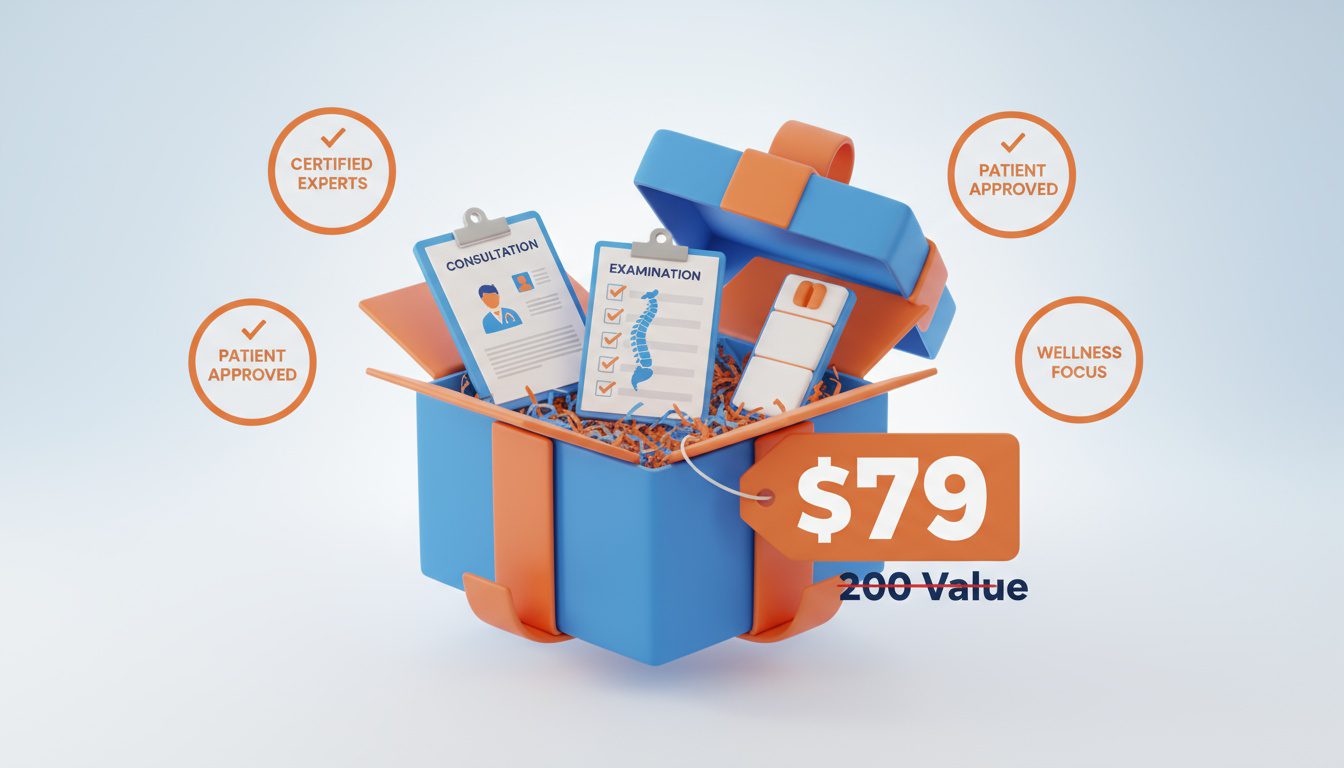
The go-to offer that fills schedules across the country is simple: bundle your initial services into one transparent, affordable package.
Here's what works: consultation + thorough examination + first adjustment, all for one clear price between $49-$99.
You're packaging services that normally cost $150-$250 separately. The math is obvious to the patient. They're thinking "okay, that's actually a really good deal" rather than "I wonder what this is really going to cost me."
The beauty of this offer is what it accomplishes beyond just getting someone in the door.
First, you're not selling a single cheap adjustment. You're selling a complete evaluation. That positions you as thorough and professional, not as a quick-fix adjustment mill.
Second, you're creating the perfect environment to build a real relationship. During that first visit, you have time to hear their story, understand their goals, explain what you're finding, and present a treatment plan that actually makes sense for their situation.
Third, you're screening out the tire-kickers. Someone willing to invest $49-$99 in their health is already more committed than someone who only came because you offered a free adjustment.
Some state boards restrict what you can include in new patient offers, so check your local regulations. In most states, you can bundle the consultation, exam, and first adjustment. Some states allow X-rays in the package if medically necessary, others don't.
The pricing sweet spot depends on your market and positioning. In rural areas or smaller towns, $49-$69 works well. In competitive urban markets or affluent suburbs, $79-$99 maintains higher perceived value.
Here's what you absolutely need to include in your package:
A real consultation where you listen to their story and concerns. Not a sales pitch. Not a rushed interview. An actual conversation where they feel heard.
A thorough examination that helps you understand what's going on. Range of motion testing, orthopedic assessment, postural analysis—whatever your standard new patient evaluation includes.
The first adjustment on the same visit if appropriate. Don't make them come back just to get started on care. If they're in pain and you can help them today, do it.
When someone calls asking about your new patient special, your front desk should confidently explain exactly what's included and what they'll walk away with. No confusion, no surprise fees, no hidden catches.
The goal is simple: remove uncertainty, demonstrate value, and create an experience that makes them want to continue care with you.
The Zero-Risk Consultation Offer

Not everyone is ready to commit to an exam and adjustment, even at a discounted rate.
Some people just have questions. They want to meet you, see your office, and figure out if chiropractic care even makes sense for them before they invest time and money.
For these folks, a free or very low-cost consultation ($19-$29) is perfect.
This offer appeals to the cautious, analytical prospect who needs more information before making decisions. The type of person who researches everything to death and hates feeling pressured.
What makes this work is the complete removal of financial risk. They're thinking "okay, I can afford to spend 15-20 minutes talking to this person and see if they're legit."
You get face time with a qualified prospect where you can answer their concerns, explain your approach, show them your clean, professional office, and build trust without any pressure.
Here's what this consultation should include:
A genuine conversation about their health concerns and goals. What's bothering them? What have they tried? What are they hoping to achieve?
A clear explanation of how chiropractic care might help their specific situation. Not a generic pitch about what chiropractic does. Specific information relevant to their concerns.
An opportunity for them to ask questions without feeling like you're watching the clock.
A straightforward explanation of what next steps would look like if they decide to move forward—with zero pressure to decide today.
The key difference between this and your new patient special: there's no examination, no treatment, and no expectation of immediate commitment. It's purely an educational, get-to-know-you conversation.
When someone books a free consultation, some practices worry they're attracting people who will never actually become patients. That definitely happens sometimes. But you know what? The people who do convert from free consultations tend to be highly committed long-term patients because they've already done their research and made an informed decision.
The biggest mistake practices make with this offer: turning it into a sales pitch. The consultation should feel like talking to a knowledgeable friend who's genuinely trying to help, not like sitting through a timeshare presentation.
If you're going to offer free or low-cost consultations, train your team to ask qualifying questions when someone books. "What health concerns are you hoping to discuss?" or "What questions do you have about chiropractic care?" helps ensure you're spending time with people who are genuinely interested, not just collecting free advice.
Some practices offer both options—a new patient special for people ready to start care, and a consultation for people who need more information first. That covers both personality types and gives prospects a choice that feels right for them.
Value Bundles That Create Committed Patients
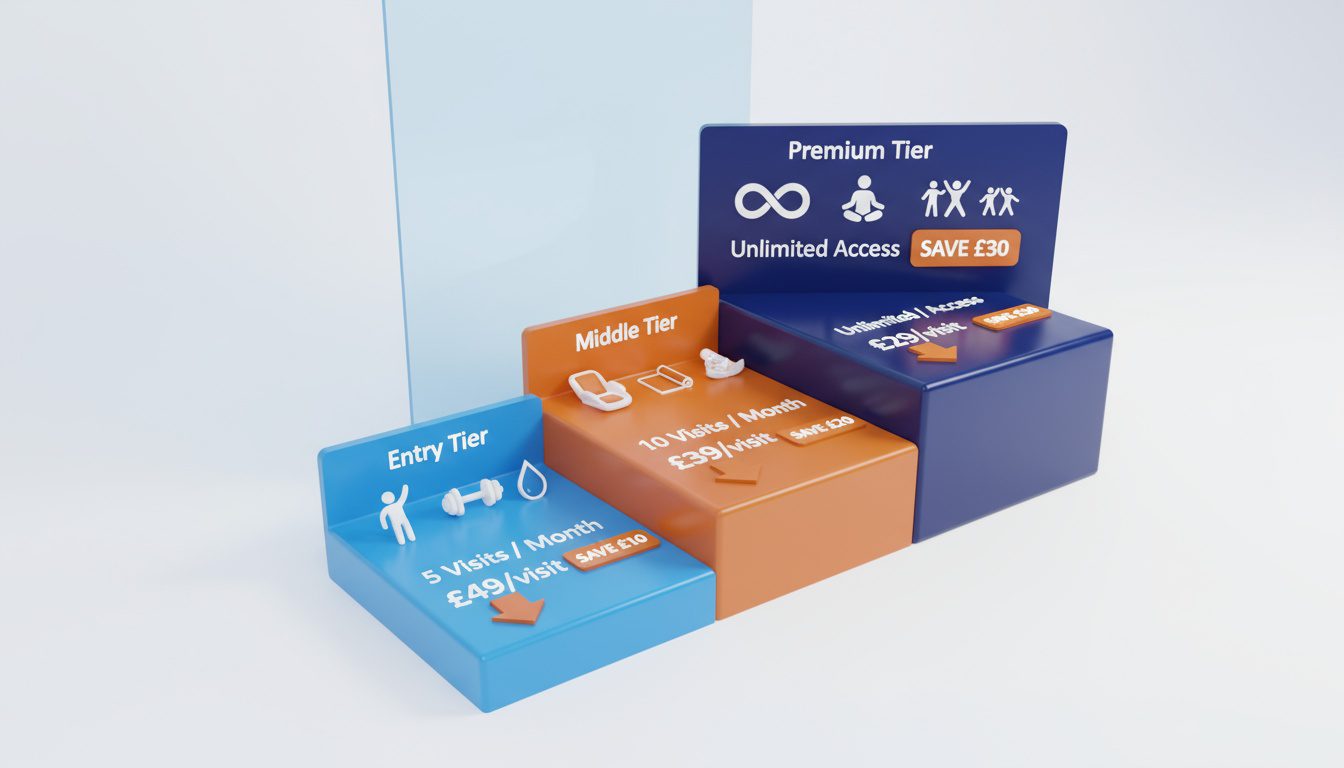
Once someone becomes a patient, your focus shifts from acquisition to retention.
This is where bundled care packages become your secret weapon for moving people from "getting pain relief" to "embracing ongoing wellness."
The most effective retention bundles work because they accomplish three critical things at once: they save the patient money, they increase their commitment to completing care, and they make your revenue more predictable.
Here's how to structure packages that actually sell:
The Wellness Care Package
Stop selling adjustments one at a time. Sell results.
Package 10-12 visits together for a single discounted price. Instead of charging $50 per adjustment for 10 visits ($500 total), offer the package for $400. They save $100, and you get a committed patient who's financially and mentally invested in seeing their care plan through.
When patients pre-pay for visits, their commitment to completing treatment plans increases dramatically, and practices see much more predictable revenue that helps with planning and stability.
The psychology here is powerful. That $400 sitting on their account becomes a forcing function to actually show up for appointments instead of letting care slide when they feel a little better.
For your front desk, it simplifies everything. No processing payments at every visit. No awkward conversations about bills. The patient just comes in, gets adjusted, and leaves.
The Family Wellness Plan
Where there's one person with back pain, there's usually another family member dealing with something similar.
Offer a small discount—10-15% off—for each additional family member who joins the practice.
This is one of the easiest ways to multiply your patient base because you're leveraging your happiest patients to bring in people who already trust your recommendations.
Think about it: spouses often share lifestyle habits that create similar physical issues. Kids involved in sports need ongoing care. Parents want their family to be healthy together.
The conversation is simple: "We notice a lot of families do better when everyone's getting adjusted regularly. We offer a family plan that saves you 15% on each additional family member. Worth considering for your spouse and kids?"
When you treat a whole family, you become deeply embedded in their health routines. That's long-term relationship territory, which means retention and referrals for years.
The Performance Package
If you love working with athletes, weekend warriors, or fitness enthusiasts, create a package specifically for them.
Bundle adjustments with services that appeal to active people: kinesiology taping, soft tissue work, mobility assessments, or performance optimization consultations.
Price it attractively and market it directly to the CrossFit crowd, recreational runners, golfers, or whatever active community exists in your area.
Here's why this works: these folks are already investing in their performance. They're buying gym memberships, supplements, recovery tools, and sports massages. A performance package that helps them feel better and perform stronger is an easy sell.
The specificity matters. When a marathon runner sees an offer built just for runners, they pay attention. When a golfer sees a "Golf Performance Package," it speaks directly to them in a way that generic chiropractic marketing never could.
You could even partner with local massage therapists, personal trainers, or physical therapists to create comprehensive recovery packages that benefit everyone involved through cross-referrals.
The key to any bundle offer: make it feel like a no-brainer investment in their health, not just a clever way to lock them into more appointments.
Reactivation Offers That Fill Your Schedule
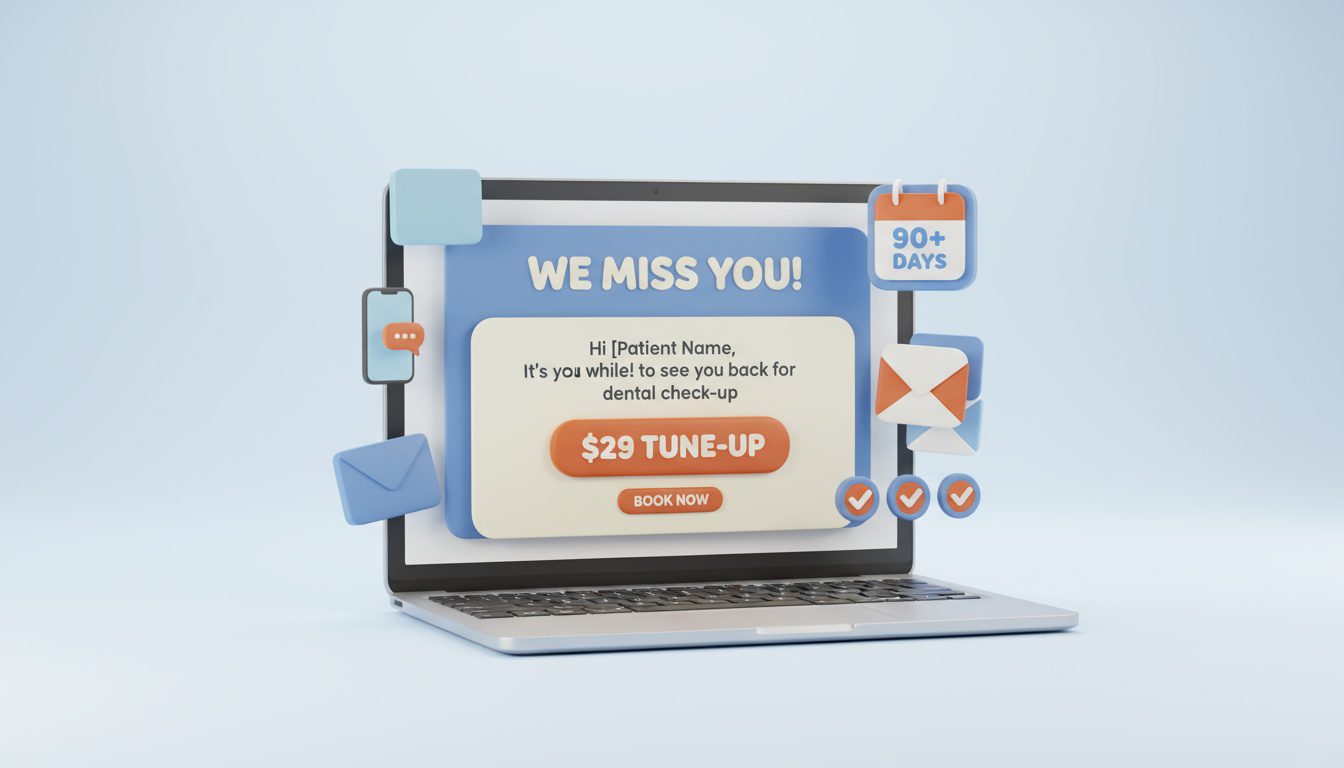
Every practice has them: patients who felt better and just... drifted away.
They're not mad at you. They're not getting care somewhere else. They just stopped thinking about their spine when the pain went away.
A reactivation campaign brings these folks back before small problems become big problems again—and it's way easier than finding brand new patients.
Here's the simplest reactivation offer that works: email or mail everyone who hasn't been in for 6+ months with a "We Miss You" message and a special tune-up offer.
Price it low enough to remove any barrier to returning—$29 to $39 for a single adjustment that normally costs $50-$65.
The copy should feel personal and genuine: "Hey [Name], we noticed it's been a while since we've seen you. We hope everything's going well! If you've been meaning to come back in for a tune-up but haven't gotten around to it, we'd love to see you. For this month only, we're offering a welcome-back adjustment for just $29. We miss you and want to help you stay feeling great."
That's it. No guilt trip about them abandoning their care plan. No lectures about maintenance. Just a friendly, low-pressure invitation to reconnect.
Why this works: it shows you care about their ongoing health, and the low price removes the mental barrier that often keeps people from making the call to schedule.
Once they're back in, you can have a real conversation about how they've been feeling, what they've been dealing with, and whether ongoing maintenance makes sense for their situation.
Some practices worry that offering a discount to former patients is insulting to current patients paying full price. Here's the reality: reactivation offers target a specific situation (patients who have lapsed in care) and solve a specific problem (empty appointment slots). Your active patients aren't in that situation, so the offer isn't relevant to them.
You can run these campaigns quarterly, focusing on different segments of your inactive patient list each time. Patients inactive 6-12 months. Patients inactive 1-2 years. Patients who came once or twice and never returned.
The ROI on reactivation campaigns is huge because these are people who already know, like, and trust you. You're not starting from scratch. You're just reminding them you exist and making it easy to come back.
Referral Rewards That Actually Get Patients Talking
Your best new patients come from your happiest current patients.
That's not theory. Research consistently shows that 88% of people trust recommendations from people they know more than any other form of marketing.
A formal referral program encourages this natural word-of-mouth by rewarding people for spreading the word about the results they've achieved.
The structure is simple: when a current patient refers someone who becomes a patient, thank them with a tangible reward.
Your reward options:
Credit toward their next visit. Easy to track, easy to apply, and directly shows you value their loyalty. $25-$50 credit per successful referral works well.
Free upgrade service. Offer a complimentary massage, taping session, or extended adjustment appointment as a thank-you. This costs you less than cash but feels generous.
Gift card to a local business. A $20 Starbucks card or gift certificate to a popular local restaurant shows appreciation without directly tying it to your services. Some patients prefer this because it feels less transactional.
Charitable donation in their name. For patients who don't need the financial incentive, offer to donate $25-$50 to their favorite charity. This positions you as community-focused and appeals to values-driven patients.
The key is making them feel valued and appreciated, not like you're just paying for referrals.
Here's how to actually implement this:
Make it stupidly easy to refer. Give patients referral cards they can hand to friends. Create a simple online form where they can submit a friend's contact info. Train your front desk to ask every happy patient "Do you know anyone else who might benefit from our care?"
Explain the program clearly. Don't assume patients know you have a referral program. Put it on your website, mention it in your emails, display signage in your office, and remind them when they're checking out after a great appointment.
Thank them quickly and personally. When someone refers a new patient, thank them immediately—ideally before their next appointment. A personal text, call, or email acknowledging their referral makes them feel appreciated and encourages future referrals.
Make the reward meaningful. A $5 discount feels insulting. A $25-$50 value feels genuinely appreciative.
The biggest mistake practices make with referral programs: keeping them secret. If only your front desk knows about the program, you'll get almost zero referrals. If every patient knows about it and it's mentioned regularly, it becomes part of your practice culture.
Want more details on setting up a referral system that actually generates consistent new patients? Check out our complete guide: Chiropractor Referral Programs: How To Grow Patient Base.
How to Market Your Offers Without Looking Desperate
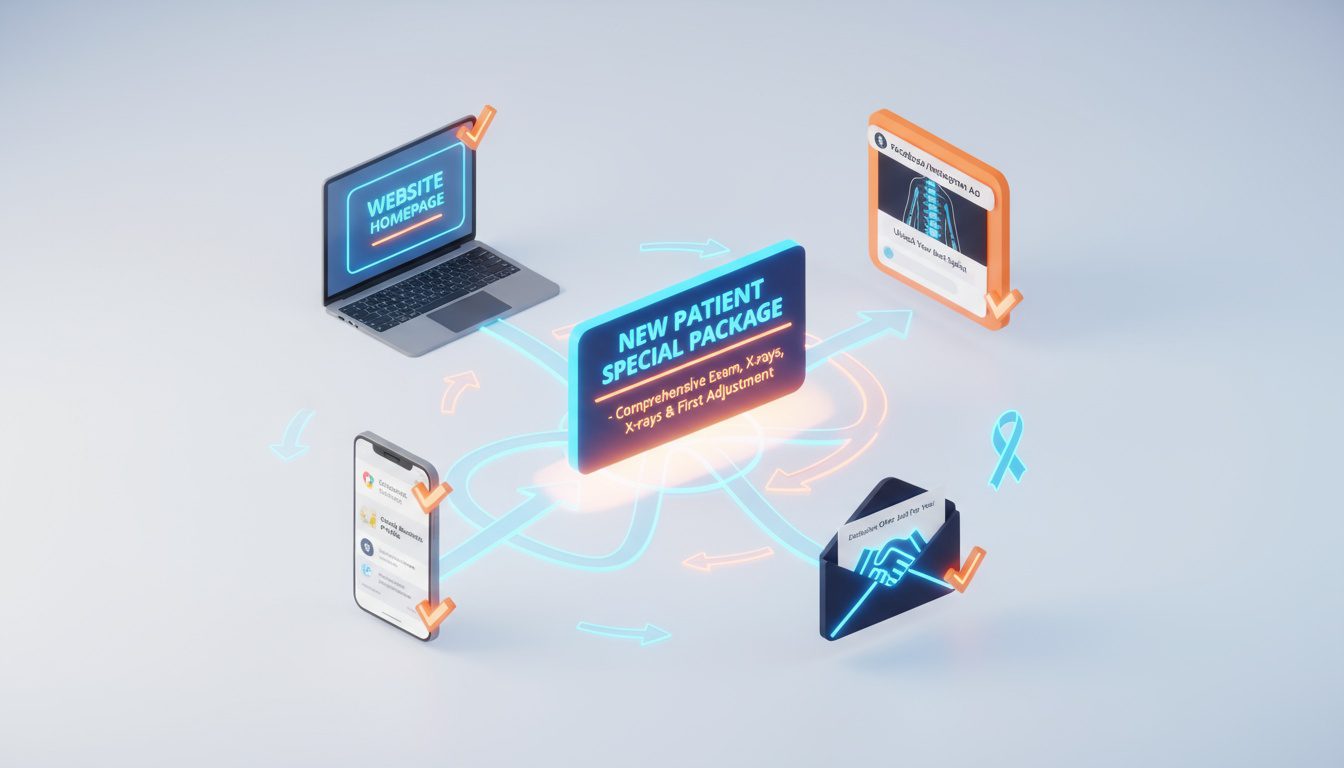
Creating a great offer is half the battle. If nobody sees it, it doesn't matter how good it is.
You need to promote your offers strategically without looking like you're desperate for patients.
Your Website and Google Business Profile
Your homepage should feature your new patient offer prominently—above the fold, impossible to miss, especially on mobile devices where most people are searching.
Don't bury it on a pricing page nobody visits. Put it front and center with a clear call-to-action button: "Book Your $79 New Patient Special."
Your Google Business Profile is critical for local visibility. Use the Posts feature to regularly share your current offers. This is free real estate that appears when people search for chiropractors in your area.
Make sure your contact information, business hours, and booking link are up-to-date and consistent everywhere online. These small details impact how you rank in local search results.
If you want to really optimize your website for converting visitors into booked appointments, check out our guide on Chiropractic CRO: Boost Your Website Conversions
Social Media and Email Marketing
Facebook and Instagram are perfect platforms for promoting visual offers.
Create a simple graphic that highlights your package—what's included, the price, the value they're getting, and a clear way to book.
You can even run targeted ads to reach people in your local area who have expressed interest in health, wellness, or pain relief. A small $5-10 per day ad budget can get your offer in front of hundreds of potential patients.
Don't forget your email list. It's a direct line to people who have already shown interest in your practice.
Send regular emails promoting your offers—new patient specials to your prospect list, retention packages to active patients, and reactivation offers to inactive patients.
If you want to set up automated email sequences that nurture leads without manual work, you should read about Chiropractic Email Marketing Strategies That Work.
Community Partnerships and Local Marketing
Chiropractic care is a local business. Smart marketing often means getting embedded in your community.
Partner with local gyms, yoga studios, CrossFit boxes, or running stores to create cross-promotion opportunities.
Offer their members an exclusive discount on your new patient special. In return, they promote your practice to their community—people who are already health-conscious and care about their bodies.
Sponsor local events, participate in health fairs, or offer free posture screenings at community gatherings. These face-to-face opportunities build trust and visibility in ways digital marketing never can.
The key to promoting offers effectively: meet potential patients where they already are. Some people find you on Google. Others see your Facebook ad. Some get referred by a friend. Your offers should be visible across all these channels, with consistent messaging and easy booking options everywhere.
Make it frictionless for someone to say yes. When they see your offer and think "okay, I should do this," they should be able to book an appointment in less than two minutes, whether they're on your website, Google profile, or social media page.
Frequently Asked Questions About Chiropractic Offers
What's the most effective new patient offer for chiropractors?
The most effective new patient offer bundles consultation, examination, and first adjustment into one transparent package, typically priced between $49-$99 for services normally worth $150-$200.
This works because it removes price uncertainty while demonstrating comprehensive care value rather than just discounting services.
The bundle approach positions you as thorough and professional, gives you time to build a real relationship during that first visit, and attracts patients who are actually committed to getting results rather than just looking for cheap treatment.
Check your state board regulations on what you can include in new patient packages, as some states restrict certain combinations.
How do I attract quality patients instead of bargain hunters with my offers?
Focus on value-based offers that emphasize what's included rather than percentage discounts.
Instead of advertising "50% off first visit," promote "Complete New Patient Package: Consultation, Exam, and First Treatment for $79 (Regular $200 Value)."
Bundle comprehensive evaluations with clear explanations of what patients receive. Use language like "Complete Care Package" or "New Patient Experience" instead of focusing on how much they're saving.
This attracts patients interested in results and thorough care, not just people hunting for the absolute cheapest option who will disappear after one appointment.
The pricing sweet spot matters too—$49-$99 creates enough of a financial commitment that you naturally screen out tire-kickers while still feeling like an amazing deal.
Should I offer a free consultation or a discounted new patient special?
It depends on your target patient and what barrier you're trying to remove.
Free consultations work best for cautious prospects who have questions but aren't ready to commit to treatment. They want to meet you, see your office, and understand your approach before investing time and money. These tend to attract analytical, research-driven people who need more information first.
Discounted new patient specials that include exam and adjustment work better for people actively seeking pain relief who are ready to start treatment immediately. They know they need help and just need a low-risk way to get started.
Some practices offer both options—giving prospects a choice that feels right for their situation. This covers both personality types and lets people self-select into the path that matches their readiness level.
What's a good price point for a new patient special offer?
Most successful chiropractors price new patient specials between $49-$99 for a package that includes consultation, examination, and first adjustment—services normally valued at $150-$250.
The exact price depends on your market and positioning. In rural areas or smaller towns, $49-$69 works well. In competitive urban markets or affluent suburbs, $79-$99 maintains higher perceived value.
The key is making it feel like an amazing deal without cheapening your services. You want patients thinking "that's a no-brainer" rather than "what's the catch?"
Price it where the math is obviously favorable to the patient—they should be able to clearly see they're getting $150-$200 worth of services for less than $100.
Avoid going too low (under $40) because it can attract the wrong type of patient and make your services feel cheap. You want a price point that demonstrates value while still requiring enough financial commitment that patients take it seriously.
How do I convert offer patients into long-term care without being pushy?
Use the initial visits to thoroughly educate patients about their condition and demonstrate clear value through actual results.
During that first appointment, do a comprehensive assessment and explain your findings in language they understand. Show them exactly what's going on with their spine and how ongoing care addresses their specific situation.
Present personalized treatment recommendations based on their individual findings, not generic cookie-cutter care plans that feel like a sales pitch.
Offer wellness packages that make ongoing care more affordable and accessible. When you can show someone "You need about 12 visits over the next 8 weeks to get lasting results, and here's a package that saves you money while committing to that plan," it feels helpful rather than pushy.
Focus on education and outcomes, not pressure. The patients who see clear value and get real results will naturally want to continue care. The ones who don't probably weren't a good fit anyway.
Should I run offers continuously or only during specific periods?
Avoid running the same offer year-round as it becomes your expected price and devalues your services.
The perception of value matters enormously in healthcare—when patients always see the same "special offer," it stops feeling special and starts feeling like your actual pricing.
Run targeted campaigns during slower periods (post-holidays, summer months) or when launching new services. This helps fill your schedule during natural dips without training patients to always expect discounts.
Seasonal offers work extremely well because they feel timely and relevant. "Back to School Posture Checks," "New Year Wellness Packages," "Spring Training Tune-Ups," or "Holiday Stress Relief Specials" all create natural urgency without seeming desperate.
Having gaps between offers maintains the perception that they're special opportunities rather than permanent pricing. When someone sees an offer is only available this month, they're more likely to take action now rather than putting it off indefinitely.
What retention offers actually get inactive patients to come back?
Offer meaningful rewards that show genuine appreciation rather than token gestures.
Options include credits toward their next visit ($25-$50), free upgrades to premium services (massage, taping, extended appointments), small gift cards to local businesses, or charitable donations in their name for patients who don't need financial incentives.
The key is thanking them promptly and personally when they refer someone—ideally before their next appointment.
A personal text, call, or email acknowledging their referral and expressing genuine gratitude makes them feel valued rather than making it feel like a business transaction.
Make referring stupidly easy: give patients referral cards they can hand to friends, create a simple online referral form, and train your front desk to ask happy patients "Do you know anyone else who could benefit from our care?"
The biggest mistake: keeping your referral program secret. If patients don't know it exists, they won't participate. Put it on your website, mention it in emails, display signage in your office, and remind them regularly so it becomes part of your practice culture.
How should I reward patients for referrals without it feeling transactional?
The most effective reactivation offer is a simple "We Miss You" campaign to patients who haven't been seen in 6+ months, offering a discounted tune-up adjustment for $29-$39 (from your regular $50-$65 price).
Keep the message warm and personal: acknowledge it's been a while, express that you genuinely miss seeing them, and make it easy to reconnect with a low-barrier offer.
The low price isn't about making money on that visit—it's about removing any mental barrier to picking up the phone and scheduling. Once they're back in your office, you can have a real conversation about their current health situation.
Email and postcard campaigns both work well for reactivation. Some practices have better response rates with physical mail because it stands out more than another email in a crowded inbox.
Run these campaigns quarterly, targeting different segments each time: patients inactive 6-12 months, 1-2 years, or who came once or twice and never returned.
The ROI on reactivation is huge because you're reconnecting with people who already know, like, and trust you rather than starting from scratch with strangers.
Take Action on These Chiropractic Offer Ideas Today
You can't just wait for patients to magically find you. You need to give them a compelling reason to choose your practice over every other option in your area.
Start simple. Pick one offer from this guide and test it for 30 days. Track how many people book appointments because of the offer, how many convert into ongoing care, and what your actual ROI looks like.
The data will tell you what resonates with your community. Maybe the $79 new patient special fills your schedule immediately. Maybe the free consultation attracts higher-quality long-term patients. Maybe your reactivation campaign brings back 20 former patients who each do another 10 visits.
Test, measure, refine. That's how you build a thriving practice that consistently attracts patients without constantly scrambling for your next appointment.
Strategic offers combined with smart marketing create a steady stream of new patients while filling your schedule with loyal, long-term patients who actually complete their care plans and refer their friends.
Want to make sure your website is actually converting the traffic your offers generate? We provide free website audits that identify exactly what's costing you patients—delivered within 24 hours with actionable insights on video.
To your dreams,

Gerek Allen
Co-Owner iTech Valet
Entrepreneur, patriot, CrossFit junkie, IPA enthusiast, loves to travel to tropical destinations, and knows way too many movie quotes.
About iTech Valet
iTech Valet specializes in web design and content marketing for online entrepreneurs who want to share their expertise.
Services Include:
- Web Design
- Graphic Design
- Sales Copy
- Funnel Building
- Authority Sites
- Membership Sites
- Course Creation
- Email Systems
- Content Marketing
- Competitive Analysis
- Tech Integrations
- Strategic Planning






